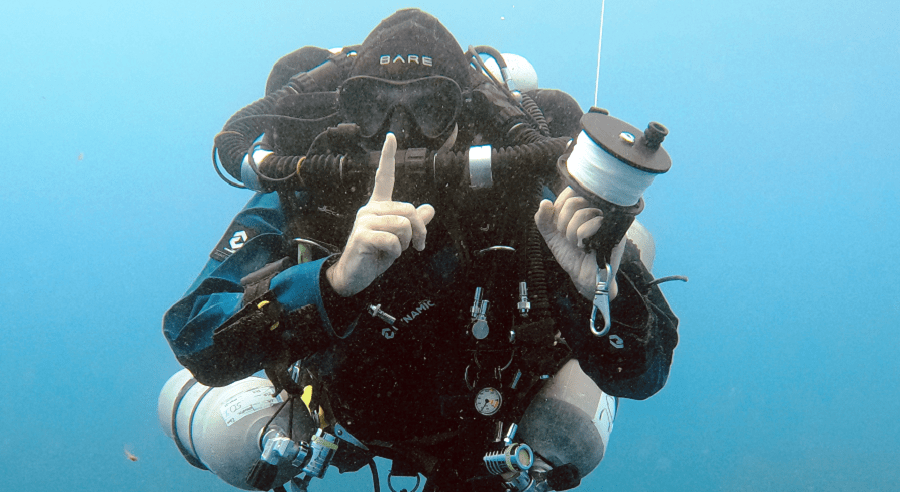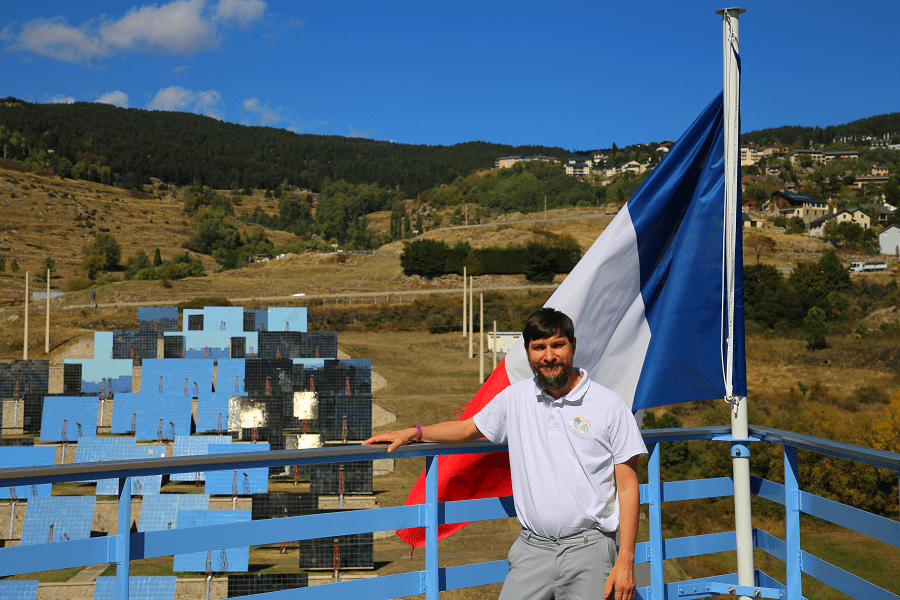
Averkin Aleksey Nikolaevich is Leading Researcher of the Computing Center named after A.A. Dorodnitsyn of the “Informatics and Management” Federal Research Center of RAS under the guidance of Academician I. A. Sokolov, Associate Professor, Candidate of Physics and Mathematics, Head of the Center for Artificial Intelligence of Dubna University, Leading Researcher at the Laboratory of Artificial Intelligence, Neurotechnology, and Business Analytics, the Russian University of Economics named after G.V. Plekhanov. Since 1992 he is a member of the Council of the Russian Association of Artificial Intelligence, from 1996 to 2006 was the president of the Russian Association of Fuzzy Systems, vice-president of the Russian Association of Fuzzy Systems and Soft Computing (since 2006), since 1993 is a member of the International Informatization Academy for the Department of Artificial Intelligence. He participated in the organization of more than 50 Russian and 20 foreign conferences as the program committee member.
In 1971, A.N. Averkin graduated from the Faculty of Mechanics and Mathematics of Moscow State University named after M.V. Lomonosov, in 1983 from the Faculty of Continuing Education of Certified Professionals of the Moscow Linguistic University. In 1985 he defended his thesis on the “Fuzzy Relation of Modeling in Artificial Intelligence Systems” topic, graduating from the graduate school of the CC RAS under the guidance of Professor D. A. Pospelov.
A. N. Averkin participated in the development of the basic principles of the new integrated trend of soft measurements, combining general issues of theory and practical applications of soft computing and intelligent measurements in the condition of significant uncertainty about complex technogenic and natural systems. One of the founders and permanent deputy chairman of the program committee of the “Soft Computing and Measurements” conference, held annually in 1998 in St. Petersburg at the Leningrad Electro-Technical Institute.
For 30 years, he taught courses and conducted seminars on artificial intelligence, intelligent information systems, decision making, knowledge management, business analytics, data mining, cognitive economics, neural networks, fuzzy sets, soft computing, and project management at Moscow State University, MEPhI, MPEI, MAI, REA, MSIRTEA, and the University of Dubna. He was the advisor of five Ph.D. theses on artificial intelligence and decision theory and more than 60 master’s, graduation and bachelor’s works. From 2006 to 2010, he was the chairman of the State Examination Commission at Belgorod State University, he lectured at Russian and international schools on artificial intelligence. From 1986 to 2020, he led and participated in dozens of research and development projects commissioned by the Applied Problems Section of the RAS, the Ministry of Industry and Energy of Russia, the Ministry of Defense, in Russian projects under grants of the RFBR and the Ministry of Education and Science, as well as in ESPRIT, ERUDIT, EUNITE, ISTC international projects.
Tell us about your work in the Computing Center of the RAS and the FRC IM of the RAS. What are the main areas of research in your science team?
Currently, the work of the intelligent systems department is associated with pattern recognition and image processing methods, data mining and forecasting; intellectual technologies and cognitive research, multicriteria analysis, and decision making in uncertainty and risk conditions. Currently, the Intelligent Systems Department is involved in the National Strategy for Artificial Intelligence development and implementation.
But I would like to talk a little bit about the history of the artificial intelligence subjects’ development in the CC RAS.
A longer period of work was associated with the artificial intelligence mathematical foundations sector that I led, which was formed back in 1988 as part of the artificial intelligence problems department under the D. A. Pospelov leadership. For 20 years, the sector has been dealing with the theoretical problems of knowledge-based systems building and their hardware and software support. Currently, as a result of the CC of RAS entry into the FRC IM of RAS, this direction has become part of the subject of the Intelligent Systems Department, which has been working under the guidance of Academician K.V. Rudakov for a long time, and now under the direction of his pupil, Candidate of Physical and Mathematical Sciences Yu. V. Chekhovich.
The following trends in the intelligent systems building were reflected in the work of the sector:
• Refusal of stiff reasoning schemes based on a deductive procedure (in the ‘80s, AI studied closed formal systems modelling domain areas, the laws of which are a priori known, but by the beginning of the ‘90s the researchers’ attention switched to the study of quasi-axiomatic systems in which the axioms are partially replaceable).
• Using the applied semiotics ideas to build semantic knowledge bases.
• World models based on action logic and other pseudo physical logics used in robotics.
• Integrated development and use of fuzzy mathematics along with neural networks and genetic algorithms.
The group’s main scientific developments are associated with the creation of neuro-genetic-fuzzy control models and their application methodology in intelligent systems. New results have been obtained in simulation modelling, fuzzy reasoning models, in distributed artificial intelligence systems, in the field of artificial immune systems with fuzzy detectors, in neuro-fuzzy biological object control models, in hybrid intelligent decision support systems, in multi-criteria ranking systems, in methods of interval values ordering in optimization problems on oriented weighted graphs.
These methods have been practically used in decision support forecasting systems for state target-oriented programs’ management, the geopolitical situation simulation, analysis, environmental safety monitoring, complex technogenic systems management (the Ecoanalytic information complex), in oncological diseases treatment, and modelling of human movement control systems in the training process, with the intellectualization of wireless sensor networks using built-in fuzzy controllers in the SensiLink commercial product. A fuzzy inference software shell was developed in the field of hardware, which allows changing the inference logic in the control process. A world’s first optoelectronic fuzzy controller prototype was developed for its hardware support, for which a patent was obtained. The fuzzy controller, which turned over the classical control theory, was developed based on the fuzzy sets theory, whose founding father was the outstanding American scientist Lotfi Zadeh from the University of California at Berkeley. Lotfi was a great friend of academicians N. N. Moisev and G. S. Pospelov and their employees working in the field of fuzzy mathematics, artificial intelligence and decision-making.
What results of your sector and your scientific group would you note?
I would like to say about the employees of the applied intelligent systems department, led by D. A. Pospelov, which included our sector. Candidate of Physical and Mathematical Sciences N. M. Nagorny. one of the brightest Russian scientists of the A. A. Markov school, at an early stage of computer science formation, was involved in the theoretical-algorithmic and mathematical-logical problems development, which over time turned into a serious source of ideas for this science. theoretical branches. N. M. Nagorny joined the algorithms theory research during Markov’s creation of his classical “Theory of Algorithms” monograph (1954). It was then that Nagorny’s theorem appeared in it, which later was included in many domestic and foreign works on the theory of algorithms.
In the field of mathematical logic, N. M. Nagorny works on the modification of the realizable logical and arithmetic judgment concept introduced by Kleene, which plays an important role in constructive semantics. A solution of Nagorny successfully stands out for its simplicity among a significant number of available solutions to this problem, dating back to D. Hilbert. He also specified the famous Markov theorem on recognition of nontrivial invariant (so-called Markov) properties of finitely defined semigroups.
N. M. Nagorny participated in the command system development of the first off-the-shelf Soviet computer BESM-2. In continuation of this work, he developed together with Markov, back in the ‘60s, the accurate language to describe the computers’ operation. N. M. Nagorny became famous for his translation from the German of the well-known two-volume “Foundations of Mathematics” monograph by D. Hilbert and P. Bernays. This is still the only one translation of this book into another language. Springer’s three-fold attempt to translate this book into English was unsuccessful.
Cognitive computer graphics is the future of human-machine interfaces and semiotic systems in general. Was this trend born for the first time in the world in your department of Intelligent applied system also?
Yes, Doctor of Physical and Mathematical Sciences A. A. Zenkin has worked in our department since 1996. In the mid-’90s, he created a new subject in the field of artificial intelligence – cognitive computer graphics (CCG), the essence of which is to develop a human-machine interface based on CCG visualization of abstract mathematical objects. Based on this approach, a dialogue system was developed for CCG studies of additive number theory problems, with the help of which important scientific results were obtained in the field of classical number theory.
What role did your teachers, Germogen Sergeyevich Pospelov and Dmitry Alexandrovich Pospelov, played in the Intelligent Systems Department history?
The Theory and Design of Large Systems Laboratory, with which the history of the Intelligent Applied Systems Department is counted, was formed in the fall of 1969 at the initiative of the deputy director of the Computing Center N.N. Moiseev, then a corresponding member of the USSR AS. The laboratory head was Germogen Sergeyevich Pospelov, then a corresponding member of the USSR AS.
G. S, Pospelov walked a characteristic path for scientists of his generation – a locksmith apprentice, a student in the evening department of the Electrotechnical College, then a student in the Department of Automotive and Aviation Equipment of MPEI. After the war G. S. Pospelov was called to the Air Force personnel department and, instead of the long-awaited demobilization, he was ordered to go to a new place of service, in the AFEA named after Zhukovsky, where he also went through all the steps of the promotion ladder from the senior engineer in the laboratory, through all teaching positions, to the head of the Electrical Engineering Faculty. G. S. Pospelov worked in the AFEA named after Zhukovsky until 1964, when he, then already a major general, was appointed deputy chairman of the applied problems section under the USSR AS Presidium. By this time, he defended his candidate (1949) and doctor (1956) thesis, and later, in 1966, was elected a corresponding member of the USSR AS in the Department of Mechanics and Control Processes, in 1984 he became an academician of AS.
Since the beginning of the 1970s, G. S. Pospelov has maintained an interest in artificial intelligence and applied intelligent systems development.
Based on G. S. Pospelov’s indicative, in 1986, under the USSR AS Presidium, a Scientific Council was created on the “Artificial Intelligence” problem of (G. S. Pospelov became the council chairman, D. A. Pospelov and E. V. Popov became his deputies). Germogen Sergeevich was the scientific cooperation organizer of AI specialists from socialist countries in the framework of the international working groups WG-18 “Knowledge representation of in human-machine and robotic systems” and WG-22 “Artificial intelligence systems hardware and software”, which he led. In the early 1980s, the AI International Basic Laboratory was created in Bratislava, where for almost ten years joint projects have been carried out bringing together scientists and specialists from countries participating in the Council for Mutual Economic Assistance.
His activities to a large extent determined the Soviet Association of Artificial Intelligence creation in 1989, Germogen Sergeyevich was unanimously elected the first president of it. Several laboratory members were elected to the Scientific Council of the association, and D. A. Pospelov became the Council chairman. He later replaced G. S. Pospelov as the association president, a title he held for many years.
It should be noted that key laboratory research on the artificial intelligence subject was developed in the sector, which Doctor of Technical Sciences, Professor Dmitry Alexandrovich Pospelov headed for many years.
The multilevel structures tool developed by D. A. Pospelov, allowed to pose problems associated with the organization of parallel computing in computer complexes and networks.
Based on this apparatus in the ’60s and ‘70s, problems such as software synchronous and asynchronous distribution among the system hardware, programs’ optimal segmentation, and optimization problems associated with the information exchanges’ distribution were solved. Currently, this group methods’ development has led to the new concepts’ creation for special knowledge bases and logical inference processors, using semantic networks or frames as a model for knowledge representation.
D. A. Pospelov laid the foundations of a new scientific field related to knowledge engineering, reasoning simulation of specialist experts who make decisions in various subject areas. He created the fuzzy quantifiers theory, which allowed many specialists to build human reasoning models that take into account certain non-factors inherent in the specialists’ thinking, which allowed us to bring the classical reasoning models studied in traditional logic closer to the reasoning models used by experts.
Dmitry Alexandrovich Pospelov is an outstanding scientist, founder of artificial intelligence in our country, professor, doctor of technical sciences, a full member of the Russian Academy of Natural Sciences.
As a recognized leader in this field, D. A. Pospelov became the head of two large international projects for creating new computer prototypes: the Soviet-Hungarian LIVS project (Logical Information and Computing System) and the PAMIR project (Parallel Architecture. Microelectronics. Intelligent Solver), which was developed in the 1980s together with scientists from Czechoslovakia, Bulgaria and Poland.
Among D. A. Pospelov scientific achievements, one can point out situational management and semiotic simulation (applied semiotics). Effective systems of operational dispatch control were built in the USSR for such complex facilities as a cargo seaport, a nuclear power plant, a pipelines’ system, etc., using these methods. These studies results, obtained back in the 1960s and 1970s, were one and a half decades ahead of their Western counterparts. Then these studies were revived in the late 1980s in works on artificial intelligence, and since 1995, they have been generalized in the framework of Russian-American conferences on applied semiotics.
Dmitry Alexandrovich Pospelov’s creative nature was far from being limited to scientific and teaching activities only. Poems and prose, history and archaeology, numismatics and painting—this is not a complete list of his hobbies. Russian cosmism philosophy fitted to him was reflected in his literary research. In 2007, Dmitry Alexandrovich published the “Amaravella. The mystical painting of Peter Fateev” book, in the annotation to which he wrote: “… these paintings are for those who have a creative spirit, who are cramped in this old heavyweight world, who have itching in their shoulders from wings starting to sprout.”
Interview: Ivan Stepanyan










